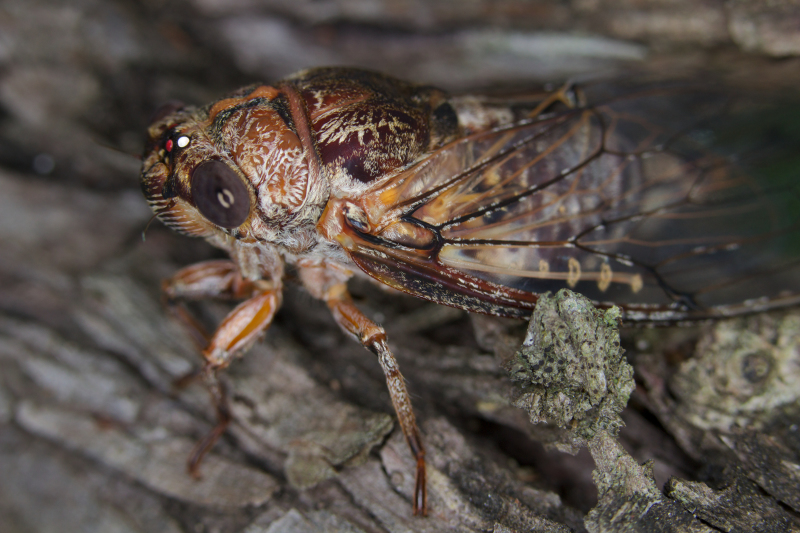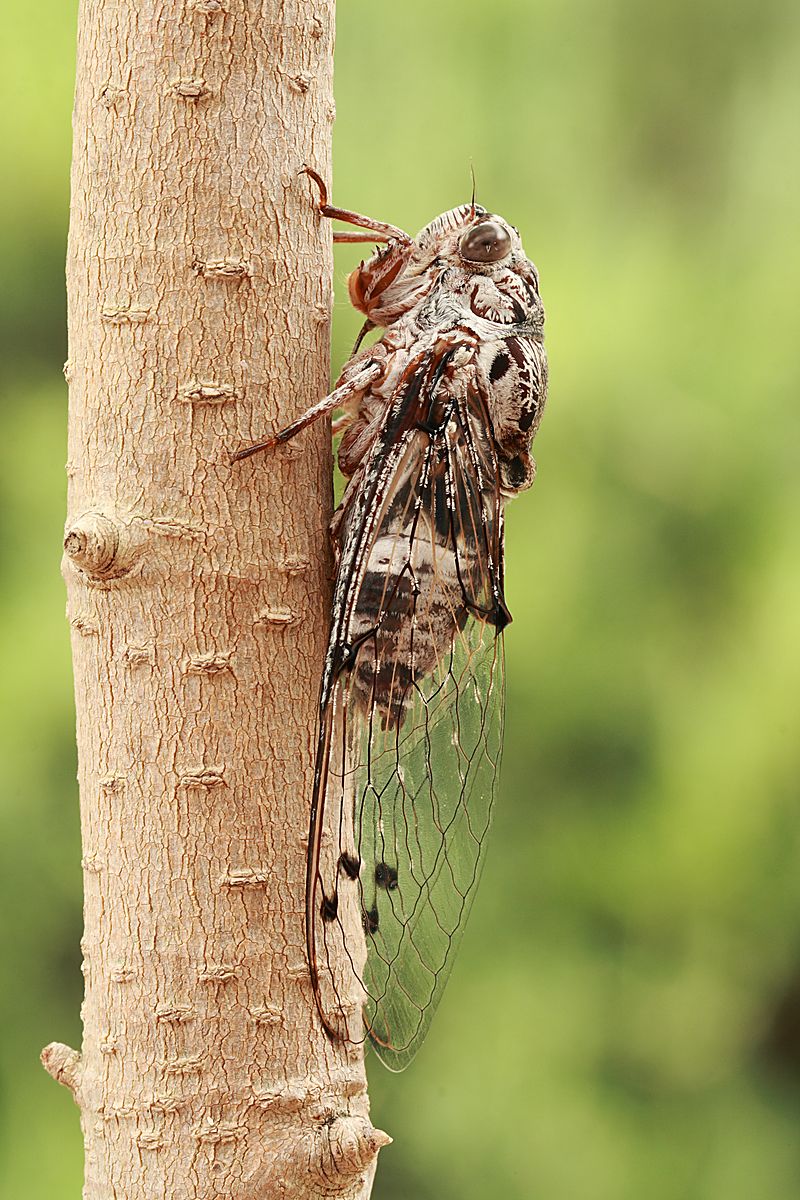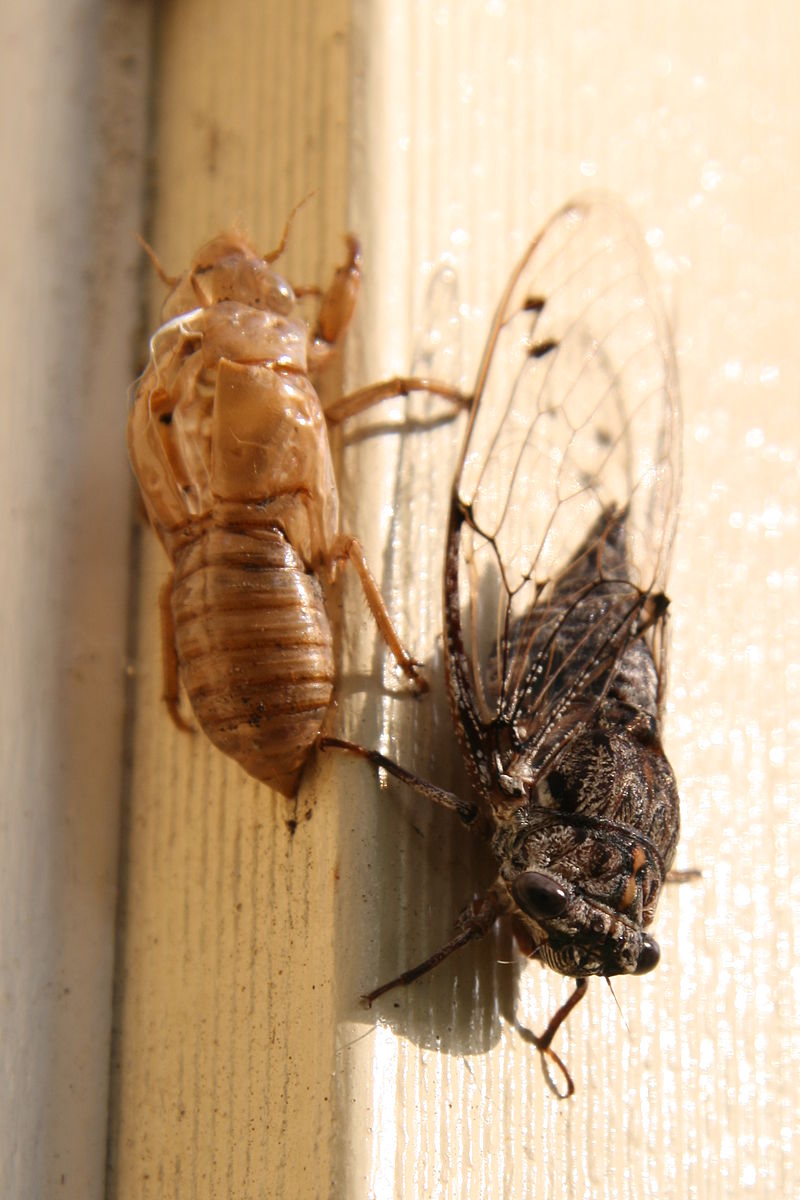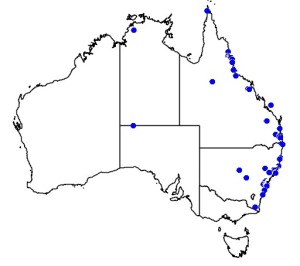Distinguishing features
The floury baker's distinctive appearance and loud call make it popular with children. Both thecommon and genus name are derived from the white, flour-like filaments covering the adult body. Its body and eyes are generally brown with pale patterns including a light-coloured line along the midline of the pronotum. Its forewings have distinctive dark brown patches at the base of two of their apical cells. The female is larger than the male, although species size overall varies geographically, with larger animals associated with regions of higher rainfall. The male has distinctive genitalia and a loud and complex call generated by the frequent buckling of ribbed tymbals and amplified by abdominal air sacs.
The floury baker is solitary and occurs in low densities. Individuals typically emerge from the soil through a three-month period from late November to late February, and can be encountered until May. The floury baker is found on a wide variety of trees, with some preference for species of paperbark (Melaleuca). (Wikipedia)
Size
- Up to 3.5 cm and averaging 3 cm (Body length)
Wingspan
- Up to 10 cm





